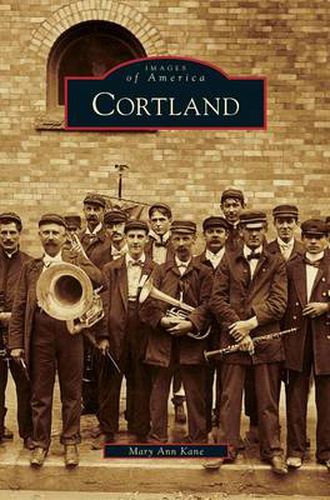Readings Newsletter
Become a Readings Member to make your shopping experience even easier.
Sign in or sign up for free!
You’re not far away from qualifying for FREE standard shipping within Australia
You’ve qualified for FREE standard shipping within Australia
The cart is loading…






This title is printed to order. This book may have been self-published. If so, we cannot guarantee the quality of the content. In the main most books will have gone through the editing process however some may not. We therefore suggest that you be aware of this before ordering this book. If in doubt check either the author or publisher’s details as we are unable to accept any returns unless they are faulty. Please contact us if you have any questions.
When Cortland was incorporated as a village in 1853, its population was mainly transplanted New Englanders and Irish immigrants, and it encompassed territory 1 mile from east to west. By 1871, two rail lines crossed the village, and their cargos of coal encouraged the development of industries, particularly carriages and sleighs. The 1890s brought Cortland’s first urban renewal with industrialists replacing wooden mansions with ones of brick, stone, and Queen Anne designs. The 20th century opened with full employment in industries that not only served the country but also the world. This encouraged Italians, Ukrainians, and Lebanese to settle in Cortland and share their heritage. Photographs from the archives of the Cortland County Historical Society illustrate how life was lived in Cortland before the 21st century.
$9.00 standard shipping within Australia
FREE standard shipping within Australia for orders over $100.00
Express & International shipping calculated at checkout
This title is printed to order. This book may have been self-published. If so, we cannot guarantee the quality of the content. In the main most books will have gone through the editing process however some may not. We therefore suggest that you be aware of this before ordering this book. If in doubt check either the author or publisher’s details as we are unable to accept any returns unless they are faulty. Please contact us if you have any questions.
When Cortland was incorporated as a village in 1853, its population was mainly transplanted New Englanders and Irish immigrants, and it encompassed territory 1 mile from east to west. By 1871, two rail lines crossed the village, and their cargos of coal encouraged the development of industries, particularly carriages and sleighs. The 1890s brought Cortland’s first urban renewal with industrialists replacing wooden mansions with ones of brick, stone, and Queen Anne designs. The 20th century opened with full employment in industries that not only served the country but also the world. This encouraged Italians, Ukrainians, and Lebanese to settle in Cortland and share their heritage. Photographs from the archives of the Cortland County Historical Society illustrate how life was lived in Cortland before the 21st century.